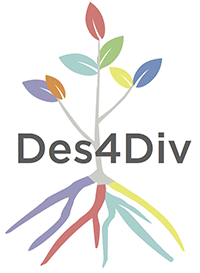
What Is This?
The Design for Diversity Learning Toolkit is a prototype exploring the resources and strategies needed to help cultural heritage practitioners advocate for and create more inclusive information systems. It is a collection of learning resources, gathered between 2016 and 2018, that can be used in a classroom, workplace, or volunteer organization. The Design for Diversity project is based in the Digital Scholarship Group at the Northeastern University Library.
Developed during an IMLS National Forums grant from 2016-2019, the Toolkit and the final grant report provide samples of the different kinds of information, actions, and next steps that can help achieve more equitable information systems in libraries, museums, and archives.
This Toolkit is written from the stance that technology is not neutral, but instead either reinforces or challenges existing inequities. The initial grant-funded phase used a participatory process to explore methods for creating more inclusive information systems in the cultural heritage fields. A core challenge for the grant team, acknowledging our starting point as a group of four white women at a private university, was to build an advisory board, core design group, and other collaborative structures that could ensure a broad set of perspectives and positions were brought to the work of this forum.
This Toolkit is a collection of:
- Case Studies based on real world projects and experiences that show the trade-offs and decisions used in creating and working with digital archives and cultural information. Case studies were specifically written for this toolkit, and we are deeply grateful to our case study authors.
- Readings or Videos, Communities of Practice, and Model Projects on the theory and practice of creating inclusive information systems
- Study Paths that combine videos, readings, and case studies with learning activities — these can be used for self-study as an individual, group study in a workplace or organization, or combined to create assignments for the classroom. Study paths were written by our Core Design Group, and we are also deeply grateful to them for the time they’ve given to this project.
Who is this for?
We define cultural heritage practitioners as, in short, the people that do the many layers of work that go into creating digital collections of history and memory. They might be in libraries, archives, museums, historical societies, or community organizations. They might be a museum curator putting together an online exhibit, the person in charge of historical records at a church, an archivist in an academic library, or a book cataloger at a public library. Cultural heritage work might also be done by the website or database developer creating the back-end systems for hosting a digital collection or catalog.
In other words, this Toolkit is for people with varied expertises and roles:
- Cultural heritage workers advocating for more just and inclusive information systems in their organization.
- Educators in disciplines training the next generation of cultural heritage workers and designers, such as library and information science, museum studies and anthropology, digital humanities, or computer science.
- Community historians working on digital projects that want to investigate whether the systems available to them allow a just and inclusive approach.
- People using the Toolkit in the classroom, or people approaching this Toolkit directly as a learner in any setting (a classroom, workplace, community organization, professional association, and more.)
How do I get started?
We invite you to jump in!
- Read orientations to putting this toolkit in action in either the classroom or workplace
- Read case studies for reflection on the real-world trade-offs and design decisions used in creating digital archives
- Use study paths as selective, interactive guides through the case studies, readings, model projects, and communities of practice.
- Read the full user guide for details on the Toolkit structure and definitions
- Browse all toolkit items directly

